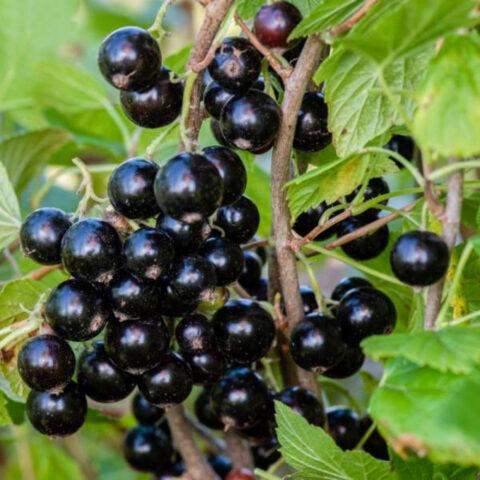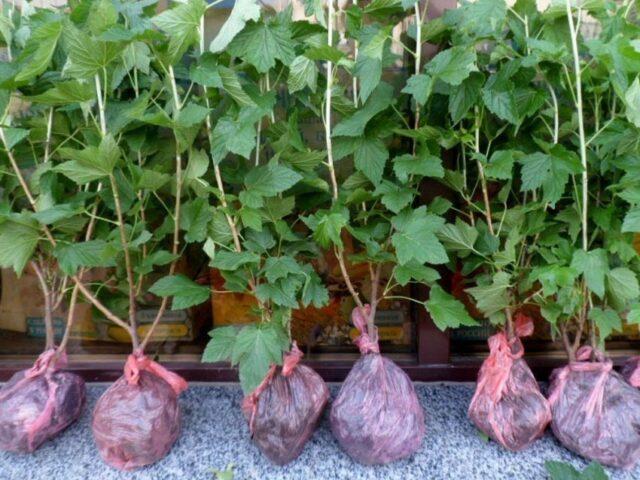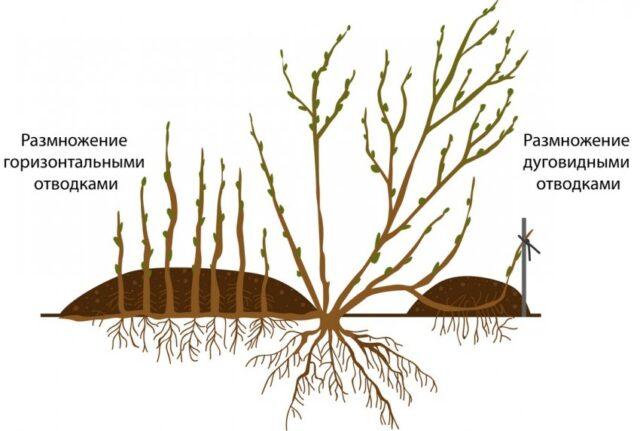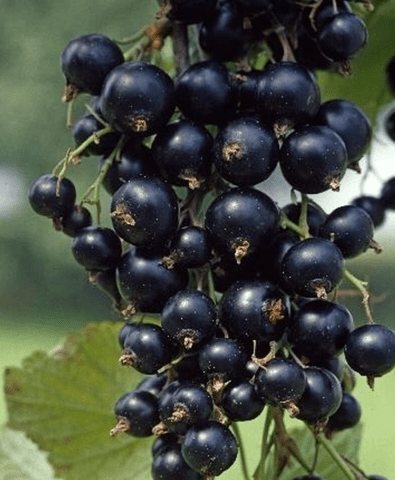Content
Currant Lama is a variety of Russian selection, bred specifically for the climatic conditions of Western and Eastern Siberia. Differs in good winter hardiness, gives a stable harvest of delicious berries. In care, the culture is unpretentious, but requires regular watering.
Breeding history
Black currant Lama is a domestic variety obtained in 1974 at the Lisavenko Research Institute of Horticulture in Siberia. The authors are N.S. Antropova, I.P. Kalinina, Z.S. Zotov and N.I. Nazaryuk. When crossing, two varieties were taken as a basis - Black Lisavenko and Leah fertile.
The currant was successfully tested, but it was included in the register of breeding achievements only in 1999. It is recommended for cultivation in the regions of Western and Eastern Siberia.
Description of the variety of black currant Lama
The currant bush of the Lama variety is vigorous (150-200 cm), compact in shape. The crown is dense, the shoots are strong, thick, straight. The surface of young branches of a violet hue, noticeably weak pubescence, More mature shoots become dark brown, lignified. Buds are small in size, oblong, with a sharp edge, crimson color, with shades of brown. They do not have pubescence, are located singly, in relation to the shoot - rejected. The apical kidney is free.
Lama currant leaves are five-lobed, large in size, dark green in color, with a slight gloss. The surface is smooth, leathery, the plate is almost flat, but slightly bent along the main veins. The middle blade is elongated, the tops are pointed, the notches between them are small. An open shallow notch is noticeable at the base of the leaf. The leaf plates are serrated, the tip is pronounced. Petioles are short, not too thick, lilac coloration, pubescence is present. In relation to the shoot, they are located at an angle of 45 degrees.
Flowers of currant varieties Lama are large in size, goblet, with pink or slightly purple sepals. The axes of the brushes are small, straight, without pubescence. The racemes are small, 5–6 cm long, drooping to the ground. The axes are green, rather thick, with a light purple tint.
The main characteristics of Lama currant berries:
- weight from 1.1 to 2.4 g;
- round shape;
- rich black color;
- the number of seeds is small;
- separation is dry;
- the pulp is sweet;
- good, balanced taste (4 points out of 5);
- the thickness of the skin is average.

Lama currant berries have a pleasant taste and attractive appearance.
During the research, the following chemical composition was established:
- the proportion of dry matter is from 13 to 18% of the total mass;
- sugar in total from 7 to 11%;
- acids - from 1.5 to 4%;
- vitamin C content: more than 160 mg per 100 g;
- the amount of pectin components: from 1 to 2.7%.
Characteristics
Llama is a black currant variety bred for the difficult climatic conditions of Siberia. The culture is unpretentious, so both an experienced and a novice gardener can cope with its cultivation.
Drought tolerance, winter hardiness
The currant variety Lama has high winter hardiness, withstands frosts down to -30 ° C without shelter. It does not tolerate drought well: in the heat, additional abundant watering is required, otherwise the yield will noticeably decrease, and the berries will become sour.
Pollination, flowering period and ripening times
Black currant Lama belongs to self-fertile varieties - it does not require pollinators, mono-planting is possible (only one variety). In terms of ripening, the culture is medium early. Flowering occurs in mid-June, and the peak of fruiting occurs in the second decade of July.
Productivity and fruiting, keeping quality of berries
The yield of Lama currants averages 2.7 kg per bush. With industrial cultivation, about 9 tons per hectare are harvested, the maximum recorded figure is 19.5 tons. Ripening is amicable, which makes harvesting easier. Keeping quality and transportability of the fruit is average, since the skin is not very strong.
Disease and pest resistance
The currant of the Lama variety is distinguished by good resistance to typical diseases and pests: powdery mildew, bud and spider mites, and gall aphids.
Therefore, as a preventive measure, it is enough to carry out one spring treatment of currant bushes of the Lama variety with a fungicide. You can use Bordeaux liquid, Skor, Tattu, Fundazol or other means. Home infusions are used to kill insects:
- wood ash and laundry soap;
- tobacco dust;
- onion peels;
- garlic cloves;
- baking soda.
In case of severe infection, insecticides are effective - "Fufanon", "Decis", "Green soap", "Biotlin" and others. The processing of currant bushes of the Lama variety is carried out in the evening, in dry and calm weather.
Advantages and disadvantages
Lama black currant has a number of advantages. This is an unpretentious culture, which was bred just for the climatic conditions of Siberia.

Black currant of the Lama variety gives a stable harvest of delicious berries that can be eaten fresh and used in preparations
Pros:
- pleasant taste of berries;
- good immunity to diseases and pests;
- friendly fruiting;
- the crop can be harvested manually and mechanically.
Minuses:
- berries are not too large;
- keeping quality and transportability are average.
Features of planting and care
When buying seedlings, you need to carefully examine them so that the roots and shoots are completely healthy. Planting is best planned for the first decade of October, but this can be done in early April. The place for currant bushes should be sunny, protected from winds and waterlogging (lowlands should be avoided). The optimal soil type is fertile, light loam.

Lama currant seedlings must be one or two years old
If the soil is clayey, 1 kg of sand or sawdust is embedded in it on the same area.
Algorithm for planting currant seedlings Lama standard:
- Dig several holes 50–60 cm deep at a distance of 1.2–1.5 m.
- Lay a layer of small stones.
- Pre-soak the roots of seedlings in "Kornevin", "Epin", "Zircon" or another growth stimulator.
- Plant at a 45 degree angle.
- Sprinkle with earth, deepening the root collar by 5-7 cm.
- Tamp a little, water abundantly.
- Mulch for the winter with peat, sawdust, dry foliage, cover with spruce branches.
In normal weather conditions, 2 buckets per bush should be given twice a month, and in hot weather - weekly. In the late evening, you can periodically irrigate the crown. Moreover, in the first year after planting, the seedlings are watered 2 times a week.
Starting from the second season, top dressing is applied:
- in April, give urea (20 g per bush);
- in early June - mullein, humus or cut grass infusion;
- during the formation of berries - complex mineral fertilizer (30–40 g per bush). At the same time, you can pour a solution of boric acid (3 g per bucket of water).
Mature bushes also need to be tied up.Loosening and weeding is carried out as needed. In the spring, they must do sanitary pruning, and in the fall - formative (12-15 strong shoots are left). They water it well for the winter, dig in the bushes, and after the first frost they cover it with burlap.
Reproduction methods
Lama currants can be diluted by cuttings and layering. In the first case, in June, cut green cuttings up to 20 cm long, make an oblique lower cut and soak in a growth stimulator. Then they are planted under a film in a mixture of peat and sand (1: 1), carefully mulched in the fall, and transplanted to a new place in the spring.
Layers are obtained at the end of spring - the lower shoots are instilled to a depth of 10-15 cm, fed, watered regularly, and mulched for the winter. In the spring, all cuttings with roots are cut, transplanted to a permanent place and nitrogen fertilized.

Reproduction of currants by layering is the most effective method
Conclusion
Currant Lama is an unpretentious variety that can be grown both in Siberia and in other regions. The bushes are strong, vigorous, the yield is stable. When leaving, remember to regularly water and fertilize. For the winter, you need to cover only in regions with an unfavorable climate.









